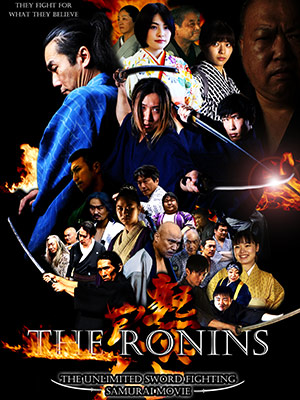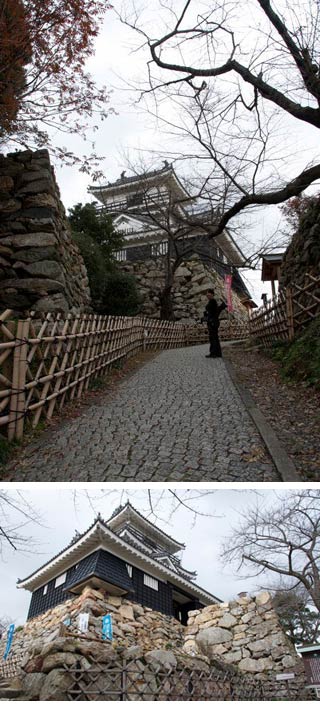Castle Type: Hilltop
Built in: 1532
Hamamatsu castle was originally built in 1532 by Imagawa Sadatsuke of the Imagawa clan.
Tokugawa Ieyasu obtained the castle after defeating the Imagawa in a battle in 1568 and moved here permanently in 1570. Many of his famous battles were fought using this castle as his base of operations. The most famous battle Ieyasu fought from Hamamatsu castle is recognised as one of the most fierce in Japanese history, and one that nearly settled the fate of the whole country by wiping Tokugawa Ieyasu out altogether - the battle of Mikata ga hara.
Tokugawa Ieyasu had extended the influence of his ally Oda Nobunaga by making Hamamatsu his headquarters. Situated halfway between Kyoto and Odawara (Edo was not yet established) on the Tokaido road Hamamatsu was in a very strategic position to control the major artery of pre-modern Japan.
Takeda Shingen realised that his biggest threat was Oda Nobunaga. Nobunaga had destroyed the base of the Buddhist warrior monks of mount Hiei in 1571, and Takeda Shingen being a Buddhist monk took this to be an affront on Buddhism as well as a threat to his desire to become warlord of Kyoto.
Tokugawa Ieyasu was not Shingen's biggest threat, but an immediate challenge to his plans to destroy Oda Nobunaga. Shingen had made a peace treaty with Nobunaga, and secretly planned to first destroy Ieyasu and then move against Nobunaga. Nobunaga advised Ieyasu to withdraw to Okezaki castle while the peace treaty was being drawn up, but the headstrong Ieyasu wouldn't have it knowing Shingen all too well.
Ieyasu remained in Hamamatsu and Shingen took this as a further affront, deciding to make a direct attack on Hamamatsu castle. Shingen cut off all of Ieyasu's supplies and support from Oda, and then moved on Ieyasu.
Ieyasu was advised that he was not the objective and that Shingen merely wanted to get at Oda. He was advised to prepare for a siege and send out night raids to break it and take Shingen from the rear. Ieyasu would have non of it, and decided against a direct battle on the plains in front of Hamamatsu castle.
The Takeda army had taken the high ground of Mikata ga hara and his army outnumbered Ieyasu three to one. The battle lasted all day and into the night when it was realised by Ieyasu that he was not going to see victory. The keeper of Hamamatsu castle, Natsume Yoshinobu rode out from Hamamatsu castle and pleaded with Ieyasu to flea and think of his family's line. Ieyasu would not budge determined to die fighting, but Yoshinobu swung Ieyasu's horse around and struck it on the rump sending him back to the castle, he then charged into the Takeda army shouting "I am Ieyasu."
As Ieyasu entered the gates of Hamamatsu castle the orders were given to shut them, but Ieyasu interrupted them. To shut the gates was exactly what Shingen wanted them to do. Instead he ordered the gates left open and all the fires to be lit to guide retreating samurai back. Sakai Tadatsugu was ordered to beat the taiko drum at the gate.
The battle chronicle Mikawa Fudo-ki notes that Ieyasu had the dead Tokugawa samurai who had died in the retreat laid upon their backs in lines while the samurai who had died in advancing laid face downwards. The advancing Takeda suspected a trick and didn't dare enter the castle even though it's gate was open.
The Takeda camped on the plain in front of the castle. Ieyasu determined to make the night unpleasant for the Takeda sent out night patrols of samurai to sneak into the Takeda encampment and take their weapons and provisions. Led by Okubo Tadayo and Amano Yasukage, skilled men in night infiltration, sixteen samurai armed with guns and 100 footsoldiers moved on the Takeda encampment. They infiltrated the Takeda in small teams and sabotaged their equipment.
Okubo constructed a dummy bridge over a narrow pass constructed of cloth and strewn with straw and then proceeded to harass the enemy from across the pass firing burning arrows into them. The ruse worked and a contingent of Takeda attempted to cross and fell into the steep ravine where they were fired upon by the Tokugawa.
Shingen held a war council and impressed by the tenacity of the Tokugawa, Shingen resolved to withdraw rather than risk a full scale siege of the castle and deal with the night infiltrators of the Tokugawa. So Tokugawa Ieyasu and Hamamatsu castle were saved by one very loyal retainer and Ieyasu's ability to use both psychological and gorilla warfare.






